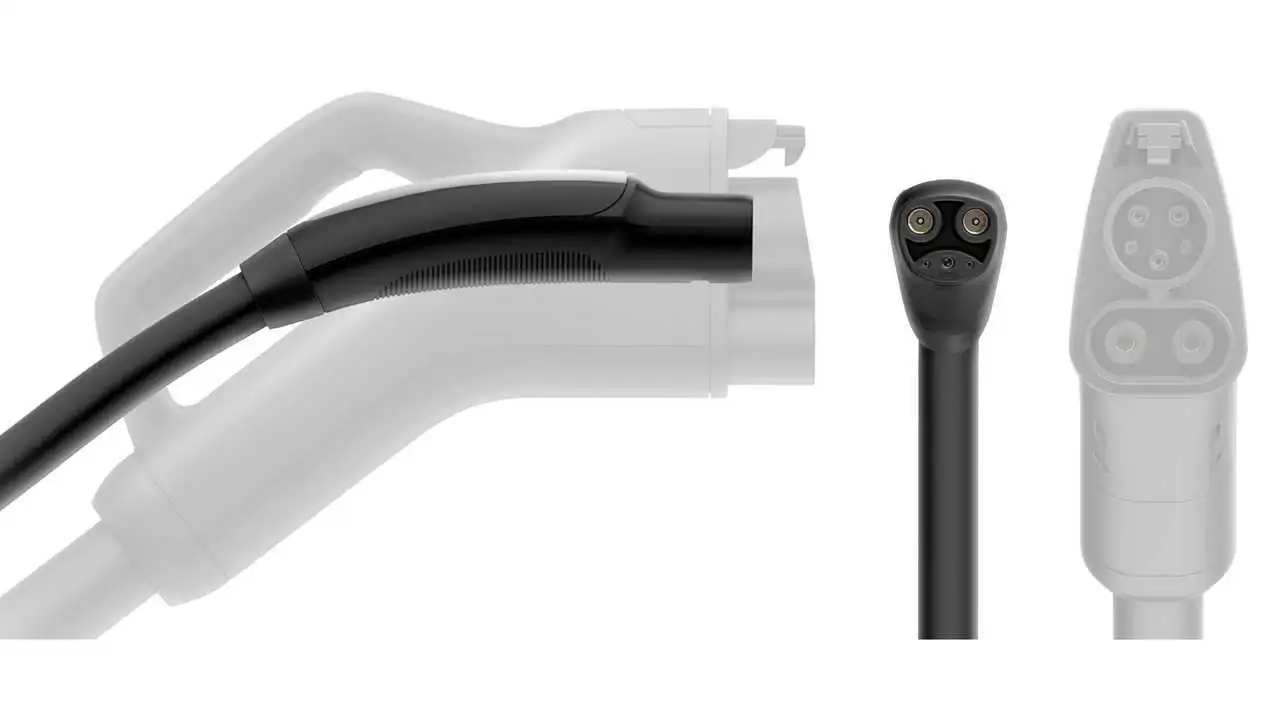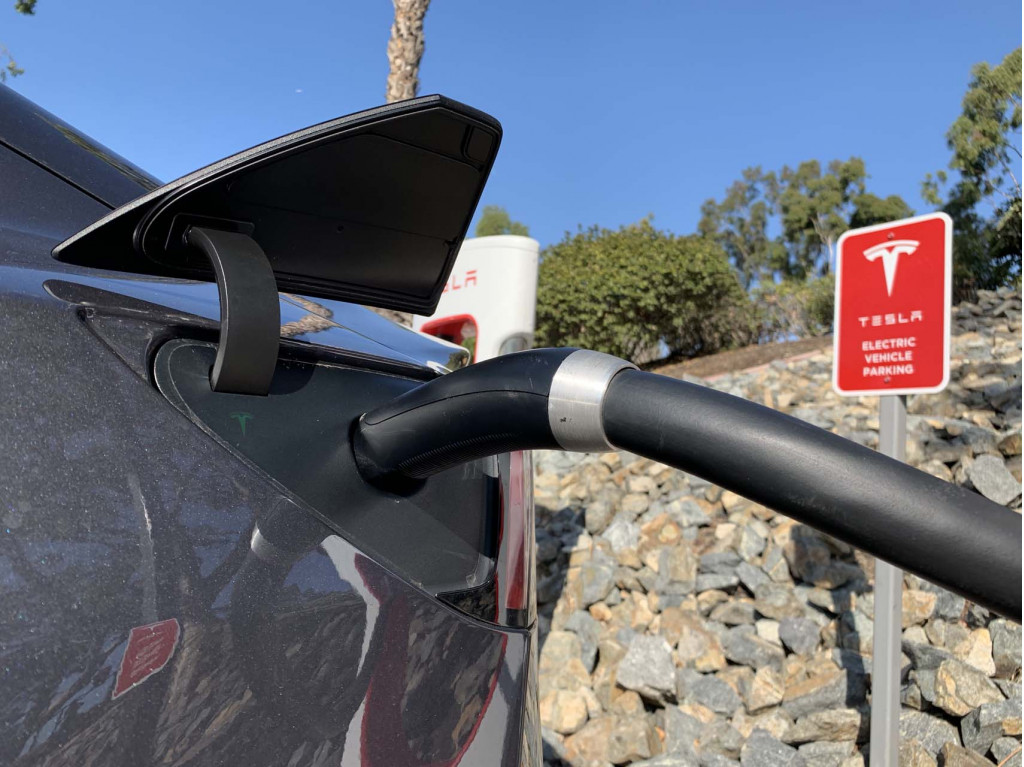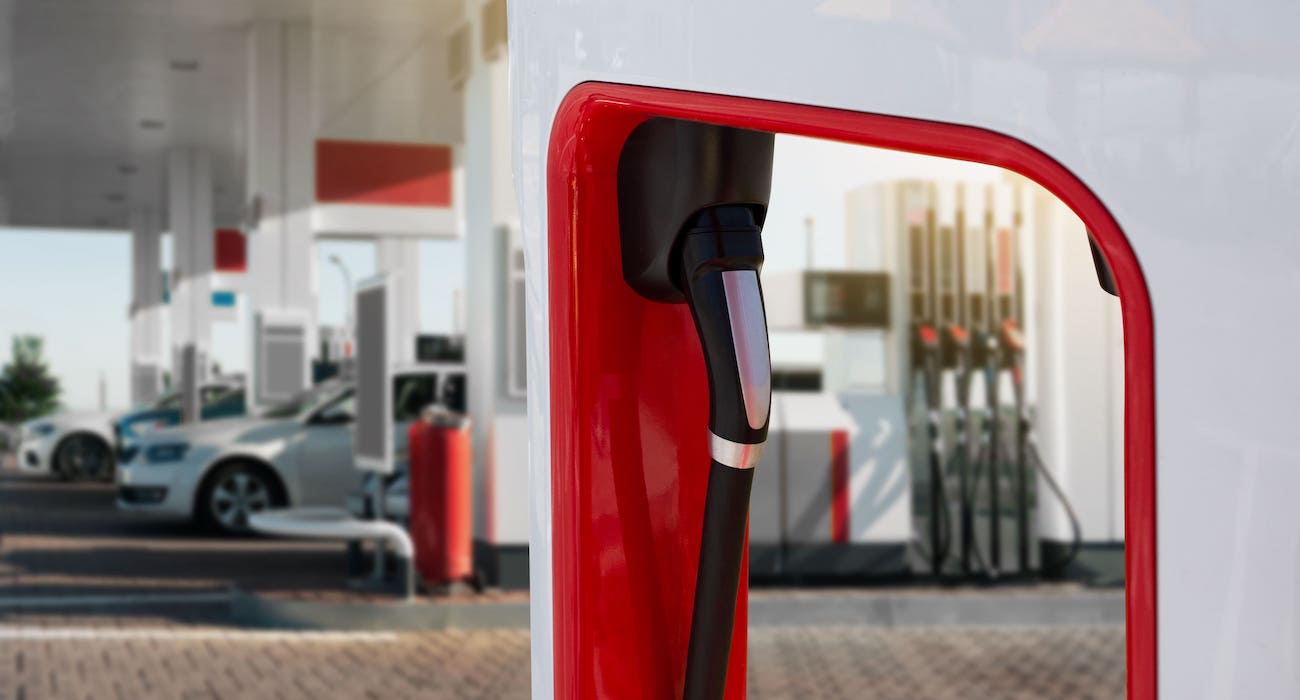Will Tesla unify North American charging interfaces?
In just a few days, North American charging interface standards have almost changed.
On May 23, 2023, Ford suddenly announced that it would fully access Tesla’s charging stations and will first send adapters for connecting to Tesla charging connectors to existing Ford owners starting next year, and then in the future. Ford electric vehicles will directly use Tesla’s charging interface, which eliminates the need for adapters and can directly use all Tesla charging networks across the United States.
Two weeks later, on June 8, 2023, General Motors CEO Barra and Musk announced at a Twitter Spaces conference that General Motors would adopt Tesla’s standard, the NACS standard (Tesla calls its charging interface North American Charging Standard (NACS for short), similar to Ford, GM also implemented the transformation of this charging interface in two steps. Beginning in early 2024, adapters will be provided to existing GM electric vehicle owners, and then starting in 2025, new GM electric vehicles will be equipped with NACS charging interfaces directly on the vehicle.

This can be said to be a huge blow to other charging interface standards (mainly CCS) that have been in the North American market. Although only three vehicle companies, Tesla, Ford and General Motors, have joined the NACS interface standard, judging from the sales volume of electric vehicles and the charging interface market in the United States in 2022, it is a small number of people who occupy the vast majority of the market: these 3 The electric vehicle sales of these companies account for more than 60% of the US electric vehicle sales, and Tesla’s NACS fast charging also accounts for nearly 60% of the US market.
2. Global battle over charging interfaces
In addition to the limitation of cruising range, the convenience and speed of charging are also a big obstacle to the popularization of electric vehicles. Moreover, in addition to the technology itself, the inconsistency in charging standards between countries and regions also makes the development of the charging industry slow and costly.
There are currently five main charging interface standards in the world: CCS1 (CCS=Combined Charging System) in North America, CCS2 in Europe, GB/T in China, CHAdeMO in Japan, and NACS dedicated to Tesla.
Among them, only Tesla has always integrated AC and DC, while the others have separate AC (AC) charging interfaces and DC (DC) charging interfaces.
In North America, CCS1 and Tesla’s NACS charging standards are currently the main ones. Prior to this, there was the fiercest competition between CCS1 and Japan’s CHAdeMO standard. However, with the collapse of Japanese companies on the pure electric route in recent years, especially the decline of the Nissan Leaf, the previous pure electric sales champion in North America, subsequent models have Ariya switched to CCS1, and CHAdeMO was defeated in North America.
Several major European car companies have chosen the CCS2 standard. China has its own charging standard GB/T (currently promoting the next generation super charging standard ChaoJi), while Japan still uses CHAdeMO.
The CCS standard is derived from the DC fast combined charging system combo standard based on the SAE standard of the Society of Automotive Engineers and the ACEA standard of the European Automotive Industry Association. The “Fast Charging Association” was officially established at the 26th World Electric Vehicle Conference in Los Angeles, USA in 2012. In the same year, eight major American and German car companies including Ford, General Motors, Volkswagen, Audi, BMW, Daimler, Porsche and Chrysler established a unified The electric vehicle fast charging standard issued a statement and later announced a joint promotion of the CCS standard. It was quickly recognized by the American and German automobile industry associations.
Compared with CCS1, the advantages of Tesla’s NACS are: (1) very light, a small plug can meet the needs of slow charging and fast charging, while CCS1 and CHAdeMO are extremely bulky; (2) all NACS cars all support a data protocol to handle plug-and-play billing. Anyone who drives an electric car on the highway must know this. In order to charge, you may have to download several apps and then scan the QR code to pay. It is very difficult. inconvenient. If you can plug and play and bill, the experience will be much better. This function is currently supported by a few CCS models. (3) Tesla’s huge charging network layout provides car owners with great convenience in using their cars. The most important thing is that compared with other CCS1 charging piles, the reliability of Tesla charging piles is higher and the experience is better. good.
Comparison of Tesla NACS charging standard and CCS1 charging standard
This is the difference in fast charging. For North American users who only want slow charging, the J1772 charging standard is used. All Teslas come with a simple adapter that allows them to use J1772. Tesla owners tend to install NACS chargers at home, which are cheaper.
For some public places, such as hotels, Tesla will distribute NACS slow chargers to hotels; if Tesla NACS becomes the standard, then the existing J1772 will be equipped with an adapter to convert to NACS.
3. Standard VS most users
Unlike China, which has unified national standard requirements, although CCS1 is the charging standard in North America, due to the early construction and large number of Tesla charging networks, this has created a very interesting situation in North America, that is: most The CCS1 standard supported by enterprises (almost all companies except Tesla) is actually a minority; instead of the standard Tesla charging interface, it is actually used by most users.
The problem with the promotion of Tesla’s charging interface is that it is not a standard issued or recognized by any standards organization, because in order to become a standard, it must go through the relevant procedures of the standards development organization. It is just a solution of Tesla itself, and it is mainly It’s in North America (and some markets like Japan and South Korea).
Earlier, Tesla announced that it would license its patents “for free” but with some conditions attached, an offer that few took up. Now that Tesla has fully opened up its charging technology and products, people can use it without the company’s permission. On the other hand, according to North American market statistics, Tesla’s charging pile/station construction cost is only about 1/5 of the standard, which gives it a greater cost advantage when promoting. At the same time, June 9, 2023 , that is, after Ford and General Motors joined Tesla NACS, the White House released news that Tesla’s NACS may also receive charging pile subsidies from the Biden administration. Before that, Tesla was not eligible.
This move by American companies and the government feels a bit like putting European companies on the same page. If Tesla’s NACS standard can eventually unify the North American market, then global charging standards will form a new tripartite situation: China’s GB/T, Europe’s CCS2, and Tesla NACS.
Recently, Nissan announced an agreement with Tesla to adopt the North American Charging Standard (NACS) starting in 2025, aiming to provide Nissan owners with more options for charging their electric vehicles. In just two months, seven automakers, including Volkswagen, Ford, General Motors, Rivian, Volvo, Polestar, and Mercedes-Benz, have announced charging agreements with Tesla. In addition, within one day, four overseas head charging network operators and service providers simultaneously announced the adoption of the Tesla NACS standard. $New Energy Vehicle Leading ETF(SZ159637)$
Tesla has the potential to unify the charging standards in the European and American markets.
There are currently 4 sets of mainstream charging standards on the market, namely: Japanese CHAdeMo standard, Chinese GB/T standard, European and American CCS1/2 standard, and Tesla’s NACS standard. Just as the winds vary from mile to mile and customs vary from mile to mile, different charging protocol standards are one of the “stumbling blocks” to the global expansion of new energy vehicles.
As we all know, the US dollar is the world’s mainstream currency, so it is particularly “hard”. In view of this, Musk has also accumulated a big game in an attempt to dominate the global charging standard. At the end of 2022, Tesla announced that it would open the NACS standard, disclose its charging connector design patent, and invite other car companies to adopt the NACS charging interface in mass-produced vehicles. Subsequently, Tesla announced the opening of the supercharging network. Tesla has the leading fast-charging network in the United States, including about 1,600 supercharging stations and more than 17,000 supercharging piles. Accessing Tesla’s supercharging network can save a lot of money in building a self-built charging network. As of now, Tesla has opened its charging network to other car brands in 18 countries and regions.
Of course, Musk will not let go of China, the world’s major new energy vehicle market. In April this year, Tesla announced a pilot opening of the charging network in China. The first batch of pilot openings of 10 super charging stations are for 37 non-Tesla models, covering many popular models under brands such as BYD and “Wei Xiaoli”. In the future, the Tesla charging network will be laid out over a larger area and the scope of services for different brands and models will be continuously expanded.
In the first half of this year, my country exported a total of 534,000 new energy vehicles, a year-on-year increase of 1.6 times, making it the world’s number one country in terms of export sales of new energy vehicles. In the Chinese market, domestic new energy related policies were formulated earlier and the industry developed earlier. The GB/T 2015 charging national standard has been unified as the standard. However, charging interface incompatibility still appears on a large number of imported and exported vehicles. There were early news reports that it does not match the national standard charging interface. Car owners can only charge at special charging piles. If they need to use national standard charging piles, they need a special adapter. (The editor couldn’t help but think of some imported appliances used at home when I was a child. There was also a converter on the socket. The European and American versions were a mess. If I forgot one day, the circuit breaker might trip .
In addition, China’s charging standards were formulated too early (perhaps because no one expected that new energy vehicles could develop so rapidly), the national standard charging power is set at a quite conservative level – the maximum voltage is 950v, the maximum current 250A, which results in its theoretical peak power being limited to less than 250kW. In contrast, the NACS standard dominated by Tesla in the North American market not only has a small charging plug, but also integrates DC/AC charging, with a charging speed of up to 350kW.
However, as a leading player in new energy vehicles, in order to allow Chinese standards to “go global”, China, Japan and Germany have jointly created a new charging standard “ChaoJi”. In 2020, Japan’s CHAdeMO released the CHAdeMO3.0 standard and announced the adoption of the ChaoJi interface. In addition, the IEC (International Electrotechnical Commission) has also adopted the ChaoJi solution.
According to the current pace, the ChaoJi interface and the Tesla NACS interface may face a head-to-head confrontation in the future, and only one of them can eventually become the “Type-C interface” in the field of new energy vehicles. However, as more and more car companies choose the “join if you can’t beat it” route, the current popularity of Tesla’s NACS interface has far exceeded people’s expectations. Maybe there is not much time left for ChaoJi?
Post time: Nov-21-2023

 Portable EV Charger
Portable EV Charger Home EV Wallbox
Home EV Wallbox DC Charger Station
DC Charger Station EV Charging Module
EV Charging Module NACS&CCS1&CCS2
NACS&CCS1&CCS2 EV Accessories
EV Accessories


